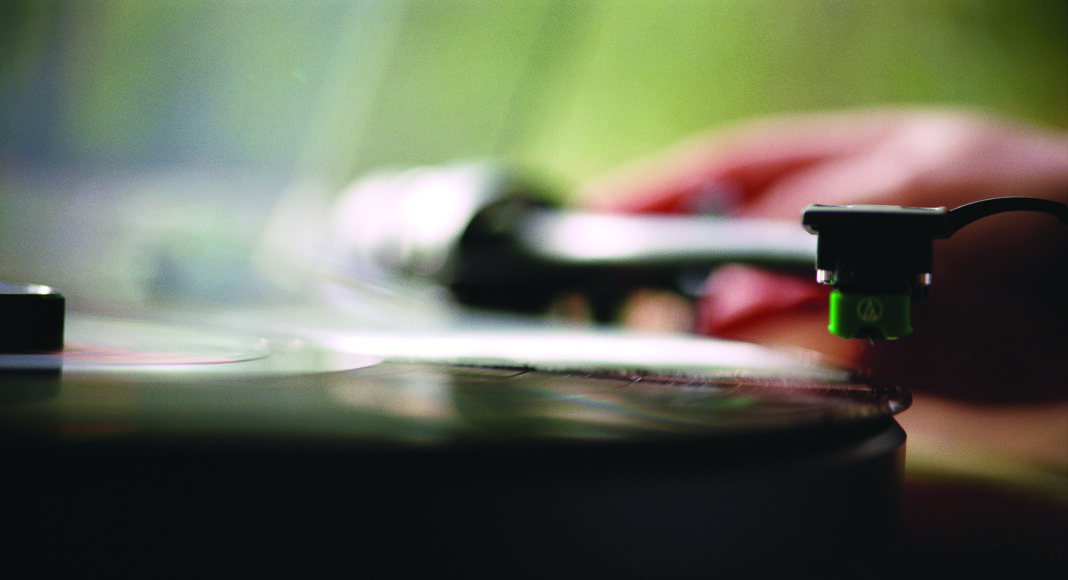When I was about eight years old and started my collection of audio cassette tapes, beginning with the Beastie Boys’ Licensed to Ill and Run-D.M.C.’s King of Rock, my parents’ record collection sparked my interest. I’d often venture down into the basement and thumb through the 60 or so vinyl albums they had held onto since their college years, which included many obligatory titles in every baby boomer’s repertoire: The Beatles’ Sgt. Pepper’s Lonely Hearts Club Band, Seals and Crofts’ Year of Sunday and Woodstock: Music from the Original Soundtrack and More.
I got to know that collection well. I never even asked to listen to the records, though I knew there was a turntable in the family room that I could use. I’d go through each crate, record by record, and sometimes take one out for a closer look, a sniff or hands-on interaction—I always felt compelled to move the zipper up and down on the Rolling Stones’ Sticky Fingers LP; the topless stripper in pasties who adorns the cover of Tom Waits’ Small Change always required a closer look.
But I would consistently give Big Brother and the Holding Company’s Cheap Thrills the most attention. After more than three decades, the colors were still brilliant and vibrant; Robert Crumb’s caricatures felt kinetic as I stared at them. I had no idea that the album contained the most significant female rock ’n’ roll voice of all time, or that those “silly cartoons” are the work of the most renowned underground cartoonist. When I eventually played the record and discovered the beauty of Joplin’s vocals a few years later, a whole other dimension to the vinyl experience opened up to me.
Aside from a more extensive selection, the vinyl experience isn’t much different from the way it was when I was eight. Three decades later, I have my own vinyl collection, and I’ve absorbed most of my parents’ records. I handle them all, take in the cover art and the smell. There’s nothing like the smell of a brand-new or used vinyl—each preowned record has a different story to tell. Apparently, my experience isn’t unique, and that’s captured in Kevin Smokler and Christopher Boone’s Vinyl Nation: A Documentary Dig into the Record Resurgence. Released just in time for Record Store Day (Saturday, April 23), the film is another love letter to the revival of the vinyl format.
“If I have any big concerns, I just put on a record really loud and drown those thoughts out,” says John Vanderslice, founder of the beloved San Francisco recording studio Tiny Telephone.
Along with Vanderslice, Nation delves into vinyl beyond the music and quality; it shows the emotion, the human connection and how vinyl is all about an all-encompassing experience. The idea of the quintessential record collector has changed over the past decade. It’s no longer ruled by characters like those in Nick Hornby’s High Fidelity. Vinyl love has become inclusive—it’s multigenerational, multicultural and non-gender-specific. Whether or not vinyl sounds better than other formats is in the ear of the beholder. Also, that limited-edition colored vinyl everyone fawns over doesn’t sound as good as traditional black vinyl.
If anyone needs further proof that vinyl has crossed over to the mainstream, the 2022 Record Store Day Ambassador might be all the evidence required: Taylor Swift, one of the biggest pop stars in the world, is representing the voice of cratediggers worldwide for the 15th anniversary of RSD.
“[Record stores] employ people who adore music thoroughly and purely,” Swift says in her opening message on the RSD homepage. “Those people and shops have had a rough few years, and we need to support these small businesses more now than ever to make sure they can stay alive, stay eccentric and stay individual.”
Hell yeah, Taylor!
Vinyl Nation is available on VOD. Record Store Day is Saturday, April 23. Visit recordstoreday.com for titles and participating locations.












